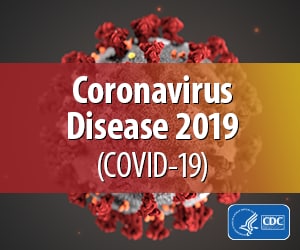Social Determinants of Health
Social determinants of health (SDOH) are the non-medical factors that influence health outcomes. They are the conditions in which people are born, grow, work, live, and age, and the wider set of forces and systems shaping the conditions of daily life.
These forces and systems include economic policies and systems, development agendas, social norms, social policies, racism, climate change, and political systems. (CDC-adapted definition from WHO 2022) Healthy People 2030 includes SDOH among its leading health indicators. One of Healthy People 2030’s five overarching goals is specifically related to SDOH: Create social, physical, and economic environments that promote attaining the full potential for health and well-being for all.
Through broader awareness of how to better incorporate SDOH throughout the multiple aspects of public health work and the 10 Essential Public Health Services, public health practitioners can transform and strengthen their capacity to advance health equity. Health equity means that everyone has a fair and just opportunity to be as healthy as possible. This requires removing obstacles to health, such as poverty, discrimination, and their consequences, including powerlessness and lack of access to good jobs with fair pay, quality education and housing, safe environments, and health care.
Increasingly, state, tribal, local, and territorial public health departments identify SDOH as among the critical challenges they face in addressing public health priorities. CDC’s National Center for State, Tribal, Local, and Territorial Public Health Infrastructure and Workforce (Public Health Infrastructure Center) brings perspectives and insights from health department leaders to inform CDC’s work with SDOH.
Below are some examples of ways that Public Health Infrastructure Center incorporates SDOH into its work.
Pathways to Population Health Equity (P2PHE) is a set of tools designed to support public health leaders to strategically advance population health, well-being, and equity. P2PHE offers a framework, roadmaps, compass, and associated tools for public health practitioners to build a more prepared, resilient, and proactive public health system at every level. The framework and associated tools can be adapted to the issues most prominent in your own jurisdiction.
Through work with multiple partners to provide technical assistance, resources, and training, CDC supports collaborative assessment and planning efforts of health departments and their community partners. For example, Public Health Infrastructure Center works with the National Association of County and City Health Officials to support the Mobilizing for Action through Planning and Partnerships (MAPP) planning framework, which incorporates health equity into its guidance and practice. The requirements and tools that health departments, hospitals, and others use to guide their collaborative state and community assessment and planning efforts include attention to data and information about health inequities and social and structural determinants of health.
These processes engage populations and multi-sector partners throughout the jurisdiction and yield collaborative plans that lay out priorities and strategies for addressing disparities.
Public Health Infrastructure Center works with partner organizations to explore health department use of innovative financing strategies, which can be opportunities to address social determinants of health. Examples from ASTHO and NACCHO include case stories about braiding and layering funds to address housing and food insecurity, and the use of participatory budgeting to ensure community-driven funding decisions.
National Initiative to Address COVID-19 Health Disparities Among Populations at High-Risk and Underserved, Including Racial and Ethnic Minority Populations and Rural Communities is a $2.5 billion grant that supports 108 STLT health departments to address COVID-19 related health disparities and advance health equity by expanding state, local, US territorial, and freely associated state health department capacity and services. One of its strategies is to mobilize partners and collaborators to advance health equity and address social determinants of health as they relate to COVID-19 health disparities among populations at higher risk and that are underserved.
CDC supports the national accreditation program, which is administered through the Public Health Accreditation Board (PHAB). The national standards serve as the basis for the accreditation program and include a significant focus on health equity and SDOH in many of the requirements. This includes areas such as community health assessment, health improvement plans, health promotion, policy development, and internal training efforts. Data from evaluation studies and from accredited sites show that, by striving to meet these standards, health departments are strengthening multi-sectoral partnerships and implementing practices, such as developing health equity policies and establishing agency-wide health equity councils.
The Public Health Law Program (PHLP), within Public Health Infrastructure Center, has a health equity portfolio that includes research on antidiscrimination or civil rights laws, health-in-all-policies, and research on the role of law as a structural and social determinant of health. PHLP resources relevant to the determinants of health assess laws concerning education, HIV testing, homelessness and housing, environment, economics, nutrition, telehealth, and tribal public health, among others.
For more information about SDOH at CDC, visit www.cdc.gov/socialdeterminants
